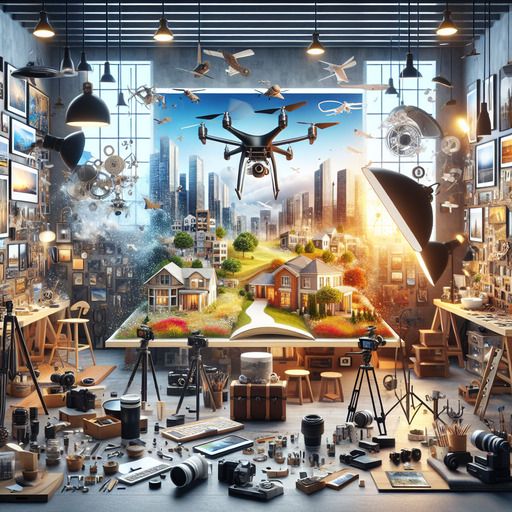
-
Table of Contents
- Mastering Real Estate Photography: Tips, Techniques, and Tools
- Understanding the Importance of Real Estate Photography
- Essential Real Estate Photography Tips
- 1. Mastering the Art of Lighting
- 2. Choosing the Right Equipment
- 3. Composition and Angles
- Enhancing Photos with Real Estate Photography Editing
- Exploring Real Estate Drone Photography
- Pricing Your Real Estate Photography Services
- Conclusion
- Questions and Answers
Mastering Real Estate Photography: Tips, Techniques, and Tools
In the competitive world of real estate, first impressions are everything. High-quality real estate photography can make or break a property listing, influencing potential buyers’ decisions before they even step foot inside. This guide will explore essential tips, techniques, and tools to elevate your real estate photography game, ensuring your listings stand out in the crowded market.
Understanding the Importance of Real Estate Photography
Real estate photography is more than just snapping pictures of a property. It’s about capturing the essence and potential of a space, enticing buyers to envision themselves living there. According to the National Association of Realtors, 87% of home buyers found photos to be the most useful feature of online property listings. This statistic underscores the critical role photography plays in real estate marketing.
Essential Real Estate Photography Tips
1. Mastering the Art of Lighting
Lighting is crucial in real estate photography. Proper lighting can highlight a property’s best features and create a warm, inviting atmosphere.
- Natural Light: Shoot during the golden hours (early morning or late afternoon) to take advantage of soft, natural light.
- Artificial Light: Use additional lighting equipment, such as softboxes or reflectors, to fill in shadows and balance the exposure.
2. Choosing the Right Equipment
Investing in quality real estate photography equipment can significantly impact the final results.
- Camera: A DSLR or mirrorless camera with a wide-angle lens is ideal for capturing spacious interiors.
- Tripod: A sturdy tripod ensures stability and allows for longer exposure times in low-light conditions.
3. Composition and Angles
Composition is key to creating visually appealing real estate listing photos.
- Rule of Thirds: Use the rule of thirds to create balanced and engaging compositions.
- Angles: Shoot from eye level to provide a natural perspective, and experiment with different angles to highlight unique features.
Enhancing Photos with Real Estate Photography Editing
Post-processing is an essential step in real estate photography. Editing can enhance colors, correct distortions, and improve overall image quality.
- Software: Use editing software like Adobe Lightroom or Photoshop to fine-tune your images.
- Techniques: Adjust brightness, contrast, and saturation to make the photos pop while maintaining a natural look.
Exploring Real Estate Drone Photography
Drone photography offers a unique perspective, showcasing properties from above and highlighting their surroundings. This technique is particularly useful for large estates or properties with stunning landscapes.
For example, a case study by XYZ Realty showed a 30% increase in listing views when drone photography was incorporated, demonstrating its effectiveness in capturing potential buyers’ attention.
Pricing Your Real Estate Photography Services
Determining real estate photography pricing can be challenging. Consider factors such as the property’s size, location, and the complexity of the shoot. Offering tiered packages can cater to different client needs and budgets.
Conclusion
Real estate photography is a powerful tool in the property market. By mastering lighting, composition, and editing, and incorporating innovative techniques like drone photography, you can create compelling images that captivate potential buyers. Remember, investing in quality equipment and honing your skills will pay off in the long run, setting your listings apart from the competition.
For more insights on real estate photography, check out this Wikipedia page on real estate photography.
Questions and Answers
Q1: What is the best time of day to shoot real estate photos?
A1: The best time to shoot real estate photos is during the golden hours, which are early morning or late afternoon. This time provides soft, natural light that enhances the property’s features.
Q2: How can I improve my real estate photography skills?
A2: Practice regularly, study professional real estate photos, and experiment with different techniques and equipment. Consider taking photography courses or workshops to further develop your skills.
Q3: Is drone photography worth the investment for real estate listings?
A3: Yes, drone photography can provide unique aerial perspectives that highlight a property’s surroundings and features, making listings more attractive to potential buyers.
If you’re interested in learning more about our real estate photography services or have any questions, please contact us.